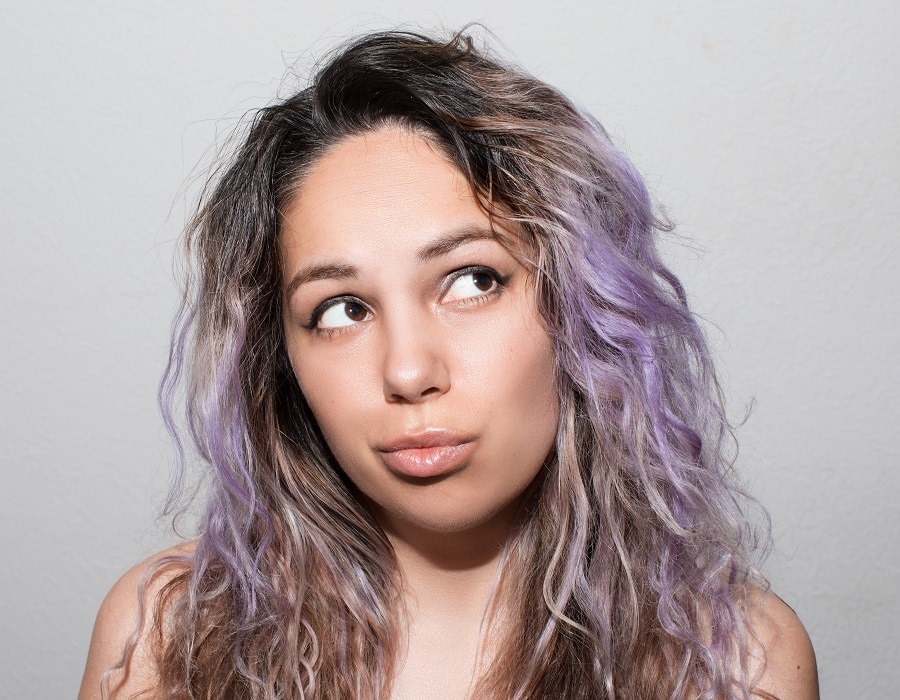Picture this: You’ve just stepped out of the salon, your hair is vibrantly blonde, and you can’t stop admiring your reflection. But as days turn into weeks, the sheen begins to fade, revealing unwelcome brassiness. Enter purple shampoo—a miraculous product hailed as the savior for blondes, grays, and highlighted hair. However, a burning question lingers in the air: Can purple shampoo actually turn your hair purple?
To embark on this captivating exploration, let’s delve into the origins of purple shampoo and its intended purpose. This innovative formula is imbued with pigments reminiscent of the shades found in violets and lavenders. The magic lies in its ability to neutralize brassy, yellow tones that often plague lightened hair. But what happens when you inadvertently use it too liberally or too frequently? Could it lead to a lavender hue where you least expected it?
The science of color theory plays a pivotal role in this scenario. In essence, purple is the complementary color to yellow on the color wheel. When the two intersect, they create balance, transforming brassy tones into a cooler, more palatable shade of blonde. However, the balance can be precarious; overdoing it may result in an unintended shift in your hair’s hue. Therefore, understanding the delicate interplay of pigment concentration is paramount.
So, what are the warning signs to watch for that indicate you may be veering toward a purple tint? Firstly, pay attention to the product’s usage instructions. Most purple shampoos are intended for weekly use or as a treatment integrated into your regular hair cleansing routine. If you find yourself lathering up with purple shampoo daily, the cumulative effects may lead to that peculiar violet tinge. Furthermore, the condition of your hair—particularly its porosity—can influence how the pigments absorb. Damaged or overly porous hair may absorb more color than desired, transforming your stunning blonde into a lilac surprise.
Let’s uncover the nuances of choosing the right purple shampoo tailored to your hair type. Not all purple shampoos are created equal. Formulations can differ significantly, with some being more potent in pigment than others. Trials and tribulations can lead you to discover that a mild, more diluted option may be better suited for fine or light hair, while thicker, more resilient strands may require a robust formula to counteract brassiness effectively.
Moreover, incorporating a violet conditioner into your regimen can strike the perfect balance. Conditioning after shampooing not only helps mitigate potential color buildup but also provides moisture that may offset any potential dryness from the shampoo itself. A mindful selection of products, coupled with an awareness of how often you’re applying them, can steer you clear of inadvertent tints.
Let’s pivot briefly to a crucial aspect—maintenance. As with any haircare product, the key to avoiding unsavory results is moderation paired with mindfulness. If you notice your blonde is at risk of fading, consider reintroducing the purple shampoo into your routine strategically rather than indiscriminately. A thoughtful application with time for pauses in between can help maintain vibrancy without excessive buildup.
It’s essential to consider that not everyone’s hair will react the same way to purple shampoo. Unique genetic factors, existing hair color, and individual hair health all intertwine to create a diverse canvas. While some might experience a light tint after a few uses, others may remain blissfully unaffected. Embrace the variability and listen to your hair, tailoring your approach as needed.
Encountering a situation where your hair has, indeed, taken on an unwanted purplish hue? Fear not! Remedies exist to salvage your locks and return them to their intended brilliance. For immediate relief, consider using a clarifying shampoo, known for its ability to remove product buildup. However, caution is warranted; these shampoos can be stripping, rendering your hair parched if used too frequently. Follow up with a nourishing conditioner to replenish moisture lost in the cleansing process.
Alternatively, natural approaches can also offer respite. A simple mixture of baking soda and water can create a paste applied to your hair, which may help to lift some of that unwelcome shade. Meanwhile, lemon juice can act as a natural lightener, though caution is required to avoid excessive dryness.
Ultimately, the efficacy of purple shampoo hinges not merely on its composition but on its adept usage. It has the potential to be your best tool in maintaining vibrancy, combating brassiness, and providing brilliance. But, as with all good things, moderation is key. Curiosity about its capabilities can give way to a newfound appreciation for your hair—whether it shines golden or remains a striking, unexpected lavender.
The vital takeaway is this: purple shampoo can indeed turn your hair purple, but this transformation is completely within your control. With wisdom, awareness, and mindful application, you can harness the power of this splendid hair care product, ensuring glowing results that highlight—not overshadow—your beautiful mane.
